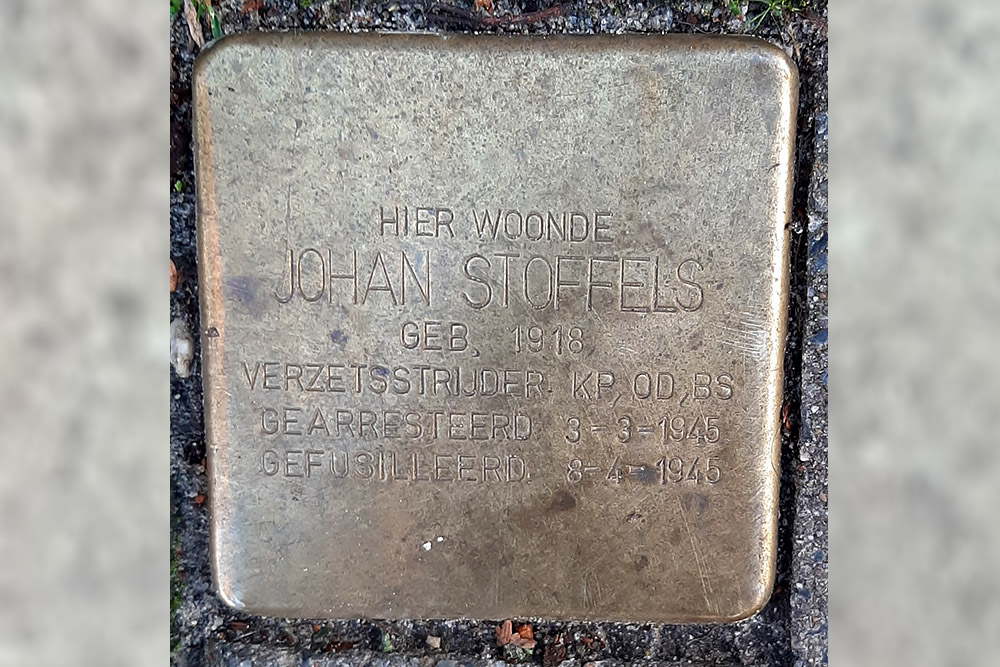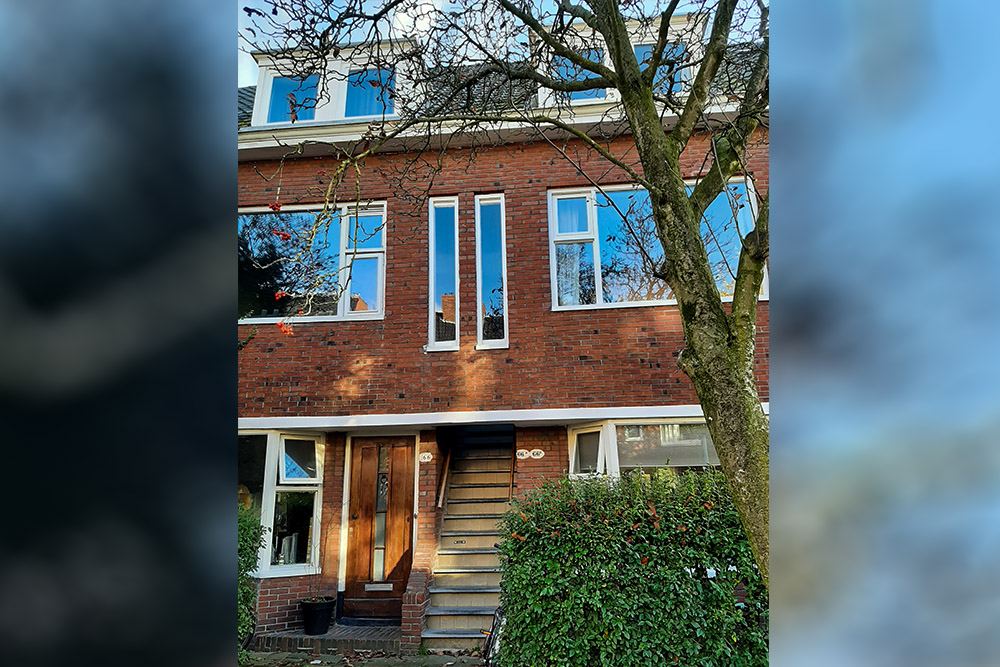Stumbling Stone IJsselstraat 66a
These brass memorial plaque (Stolpersteine or stumbling stone) commemorates:
*JOHAN STOFFELS (born 1918, murdered 8 April 1945, Norg)
Johan Stoffels was born on May 29, 1918, in Groningen. After two years of secondary education, he began working as a car mechanic. His technical aptitude led him to join the Army Motor Service Corps during his military service in 1938, where he served as a driver, a role he resumed during the mobilization in 1939.
In 1943, Johan married Tiny Hamstra and the couple moved into a rented house on IJsselstraat in Groningen. It was in that same year that Johan joined the resistance. His role became crucial in 1944 when he became the leader of a local resistance group (KP), known by his alias ‘Theo’. The resistance group ‘Theo’ played a key role in the armed resistance. Unfortunately, the group was betrayed by one of its own members. On March 4, 1945, Johan Stoffels was arrested at the group's contact address, the Broekenhuis on Poelestraat.
Just a few weeks later, on April 8, 1945, shortly before the liberation of Groningen, Johan Stoffels was executed by firing squad together with ten other resistance fighters in a remote location in Norg. He died at the age of 26 as a hero of the resistance.
This Stolperstein lies here for a resistance fighter, arrested and murdered in World War II.
"Stolpersteine" is an art project for Europe by Gunter Demnig to commemorate victims of National Socialism (Nazism). Stolpersteine (stumbling stones) are small, 10x10cm brass plaques placed in the sidewalk in front of a residence of (usually Jewish) victims of the Nazis. Each plaque is provided with the name of the victim, date of birth and the fate of these people. By doing this, Gunter Demnig gives an individual memorial to each victim. One stone, one name, one person. He cites the Talmud: "A human being is forgotten only when his or her name is forgotten."
Do you have more information about this location? Inform us!
Source
- Text: TracesOfWar
- Photos: Bert Deelman
Nearby
Point of interest
- Bullet Impacts Paterswoldseweg Groningen - Groningen
- German Slogan On Wall - Groningen
- Memorial Paterswoldseweg Groningen - Groningen
Monument
- Memorial Park Bridge - Groningen
- Memorial Fred Butterworth - Groningen
- Memorial Killed Railway Employees Groningen - Groningen
Cemetery
- Commonwealth War Graves Groningen - Groningen
- Dutch War Graves Zuiderbegraafplaats - Groningen
- Dutch War Graves RC Churchyard - Groningen
Remembrance Stone
- Stumbling Stones J.A. Feithstraat 2 - Groningen
- Stumbling Stones J.A. Feithstraat 2 - Groningen
- Stumbling Stones J.A. Feithstraat 4 - Groningen
Fortification
- German Tobruk Bunker Suikerunie Factory - Groningen
- German Shelter Suikerunie Factory - Groningen
- German Bunker Haren - Haren





